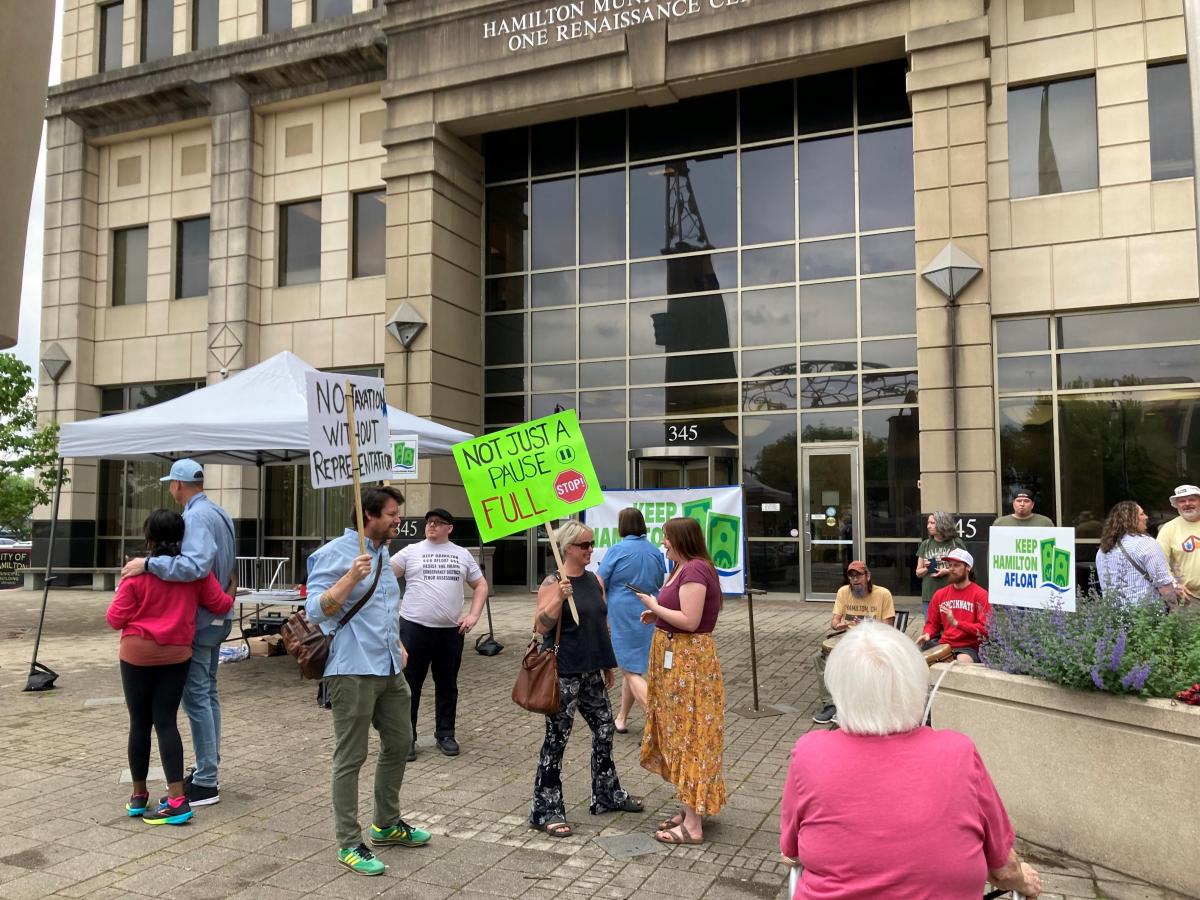Local conservancy district meetings in Ohio don’t normally attract much attention. The meeting on Friday evening in the city of Hamilton north of Cincinnati wasn’t the usual conservancy meeting.
The three members of the Miami Conservancy District board of directors on Friday filed past dozens of protesters outside of Hamilton City Hall who where pounding drums and waving signs with slogans “No taxation without representation,” “Keep Hamilton Afloat” and “History has its eyes on you.”
The protesters wanted a halt to a major increase in flood protection costs for people that live and work along the Great Miami River.
An hour later, they got their wish. The board unanimously voted to stop the property reassessment and rate hike that pays for flood protection from the five dams and 55 miles of levees on the Great Miami River and its tributaries.
For now, what people pay for flood protection will remain the same while the conservancy works on a different funding formula.
‘This is what our city needed to hear tonight’
The board members listened and heard the community’s concerns, said Mark Rentschler, the chairman of the board for the Miami Conservancy District.
“We want to make sure that the cost of flood protection is fair and equitable for all,” Rentschler said.
This was met with gratitude from the city officials and protestors, who praised the board for listening.
“This is going to be a win for our city,” said Hamilton City Councilman Michael Ryan. “It’s a win for our businesses. It’s a win for our neighborhoods … This is what our city needed to hear tonight.”

A century-old formula
The cost of flood protection for the Great Miami River is based on a century-old formula devised after a catastrophic 1913 flood. The flood killed 300 people and swept away homes, businesses and bridges. Within two years of the flood, residents banded together, hired an engineer and formed the Miami Conservancy District.
The district put in place a formula that charged property owners along the river based on how much water their property took on during the 1913 flood and the property’s value. The goal was to assess how much benefit the property received from the dams and levees. As property values changed, the district would reassess the benefits.
The proposal by the conservancy this year would have been the seventh reassessment of benefits in the organization’s 109-year history and the first in 12 years.
Residents along the Great Miami River in five counties pay the assessments for the flood control: Hamilton, Butler, Warren, Montgomery and Miami counties.
Most of the properties affected, 80%, are in Butler and Montgomery counties.


Perhaps one of the hardest hit would be 1.2 million-square-foot Spooky Nook sports complex in Hamilton, which would see its conservancy bill go from $8,800 a year to $477,000 annually under the proposed assessment.
‘It’s like the story of America’
For many protesters outside Hamilton City Hall on Friday, their tax bill wasn’t the biggest concern. It was the damage it could do to the city of Hamilton and the progress they feel this industrial town of 63,000 has made in the past decade.
Michael and Bekki Rennick eight years ago opened their bed and breakfast Benninghofen House in Hamilton. They said the businesses, restaurants, breweries and Spooky Nook sports complex have revitalize the town. They don’t want high tax bills to jeopardize that by scaring people and businesses away.
“This is a Midwest, Rust Belt, broken industrial town that has come back and it’s like the story of like America,” Michael Rennick said while holding a sign “No taxation without representation” outside city hall Friday. “We’ve got something special going on here. I hate seeing something like this disrupt it.”
This article originally appeared on Cincinnati Enquirer: Here’s why residents along the Great Miami won’t see a rate hike
